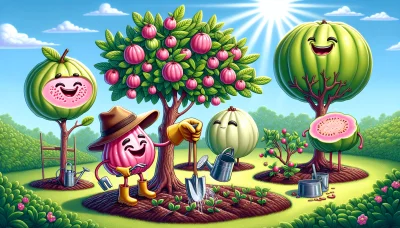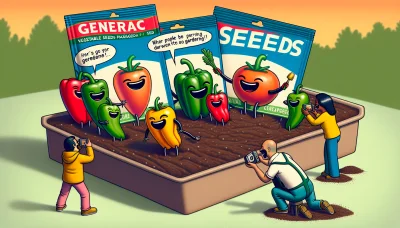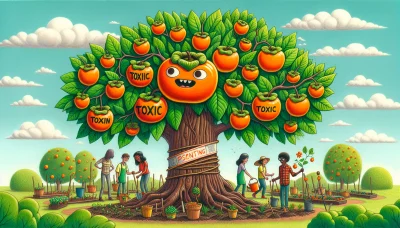When are persimmons ripe Quiz
Test Your Knowledge
Question of
When Are Persimmons Ripe?
Persimmons are a unique and flavorful fruit that require careful attention to timing to harvest at their peak of ripeness. Understanding when persimmons are ripe is crucial for gardeners who wish to enjoy the full sweetness and texture that this fruit can offer. Ripeness not only affects the taste but also the nutritional value of persimmons, making it an important aspect of gardening and fruit cultivation.
Understanding Persimmon Varieties
Persimmons are unique fruits that come in various shapes, sizes, and flavors, broadly categorized into two main types: astringent and non-astringent. Astringent persimmons, such as the Hachiya, are known for their acorn-like shape and need to be fully ripe before eating to avoid their puckering taste. On the other hand, non-astringent persimmons, like the Fuyu, are squatter and can be eaten while still firm, offering a sweet and crunchy experience. Each variety has its own distinct characteristics, making persimmons a versatile fruit for culinary exploration.
Signs of Ripeness in Persimmons
- Color: Ripe persimmons have a deep orange or red color. The skin should be uniformly colored without any green spots.
- Softness: Gently press the fruit with your fingers. A ripe persimmon should yield slightly under pressure, indicating softness without being mushy.
- Texture: The skin of a ripe persimmon should be smooth and glossy, free from blemishes or bruises.
- Stem: The stem should detach easily when the fruit is ripe. If it resists, the persimmon may need more time to ripen.
- Aroma: A ripe persimmon will emit a sweet, fragrant aroma. If there's no scent, it may not be ready to eat.
Harvesting Tips for Perfect Persimmons
To harvest persimmons without harming the fruit or the tree, use garden shears or scissors to cut the fruit from the tree rather than pulling it. Make sure to leave a few inches of stem attached to protect the integrity of the fruit. It's also important to wear gloves to protect your hands from the fruit's sometimes sticky sap. Gently place harvested persimmons in a basket or tray to avoid bruising. Harvesting in the morning when the temperature is cooler can help keep the fruit in peak condition.
Storing and Preserving Your Persimmons
To ensure your persimmons remain fresh and tasty for as long as possible, proper storage is essential. Persimmons should be kept at room temperature until they reach the desired ripeness. Once ripe, you can extend their shelf life by moving them to the refrigerator, where they can be kept for several weeks. It's important to store them in the crisper drawer to maintain the ideal humidity level, as too much moisture can lead to spoilage. If you wish to keep persimmons for an extended period, consider freezing them. To freeze, first peel the persimmons, puree the flesh, and store it in an airtight container. This method is perfect for preserving the fruit for use in smoothies or baked goods at a later date. Remember, keeping persimmons at the correct temperature and humidity levels is key to maximizing their shelf life and enjoying their unique flavor for as long as possible.
Common Problems and Solutions
- Pests: Persimmons can attract various pests like fruit flies, mealybugs, and scale insects. A solution is to regularly inspect the trees and apply organic pesticides or introduce natural predators like ladybugs into the garden.
- Diseases: Fungal diseases such as anthracnose can affect persimmons, causing dark, sunken spots on fruits and leaves. To combat this, ensure proper air circulation around the trees and apply fungicides as necessary.
- Improper Pruning: Incorrect or excessive pruning can lead to reduced fruit production. It's important to prune persimmon trees during the dormant season and only remove dead or overcrowded branches to ensure healthy growth and fruiting.
- Water Stress: Both overwatering and underwatering can stress persimmon trees, leading to poor fruit development or tree health. Maintain a consistent watering schedule, ensuring the soil is moist but not waterlogged.
- Nutrient Deficiency: Yellowing leaves or stunted growth may indicate a lack of essential nutrients. Conduct a soil test to determine what is missing and amend the soil with compost or specific fertilizers to address the deficiencies.
Enjoying Your Ripe Persimmons
As you savor the unique sweetness of ripe persimmons, consider exploring the versatility of this delightful fruit in your culinary adventures. From simple snacks to sophisticated dishes, persimmons can add a special touch to your meals. Try slicing them into salads for a burst of color and flavor, or blend them into smoothies for a nutritious treat. For a quick and easy recipe, create a persimmon salsa by mixing diced persimmons with onion, cilantro, lime juice, and a hint of chili. This salsa pairs wonderfully with grilled chicken or fish, offering a perfect balance of sweet and savory. Baking enthusiasts can also incorporate persimmons into breads, muffins, and cakes, providing a moist texture and a natural sweetness that reduces the need for added sugars. Embrace the seasonal charm of persimmons and let their distinct taste inspire your next kitchen creation.












